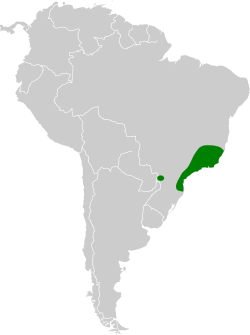| Dusky-throated hermit | |
|---|---|
 | |
| Scientific classification | |
| Kingdom: | Animalia |
| Phylum: | Chordata |
| Class: | Aves |
| Clade: | Strisores |
| Order: | Apodiformes |
| Family: | Trochilidae |
| Genus: | Phaethornis |
| Species: | P. squalidus |
| Binomial name | |
| Phaethornis squalidus (Temminck, 1822) | |
 | |
The dusky-throated hermit (Phaethornis squalidus) is a species of hummingbird in the family Trochilidae. It is endemic to Brazil. [3]

